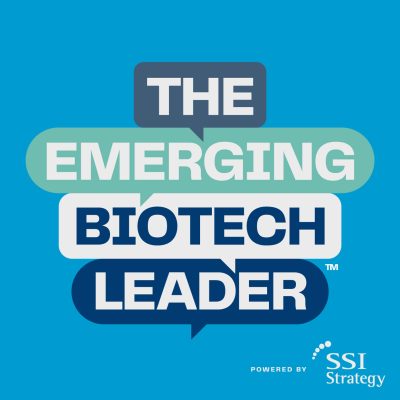
Oct 14, 22 2022
The Medical Office is a Value Driver : 4
The Medical Office is a Value Driver : 4

Join today’s guest, co-founder, and CEO of SSI Strategy, Doug Locke, whose experience in entrepreneurship, investing, and advising biotechs and startup companies shares key differentiators.
The Medical Office
While building the investor thesis, the Medical Office should be at the forefront of organizations’ minds. It’s often not given enough attention. How much attention should the medical office get early on? As it stands, the Medical Office can be under-structured due to resource scarcity or not having the right players involved.
The Medical Office is a value driver, It helps different audiences (investors, the medical community, and even the patient community) understand the validity of the science. But when and how should organizations build out the medical office?
It’s important to take your time filling critical roles, like the Chief Medical Officer. Also, finding solutions outside of full time employees, like advisory board members, advisors, and outside support organizations, helps alleviate early pressure. It’s about maintaining flexibility in the early stages and figuring out what is right for the organization in the beginning.
Platform vs. Asset Play
When pitching to investors, there are two main paths to take. Proving the platform or developing the asset. The Medical Office is used to drive the value of either path. But it’s vital to have a cohesive story to share with investors about which direction the biotech takes. One of the biggest mistakes early biotechs make is to try to prove too many things early on and, by doing so, dilute the story they tell to investors and board members.
Messaging for the Investor Thesis
As far as messaging, ambiguity can be created when going back and forth between proving the platform or substantiation of the asset. It’s better to be incredibly clear with the value proposition, use the Medical Office to drive the value of the platform orientation or the asset orientation, and then engage the investor community.
De-Risking Early Decisions
Intentionally, thinking through the platform from a safety, efficacy, and payload perspective, and utilizing the various resource programs at their disposal, helps to de-risk during the early stages of a biotech startup. Smaller teams work to the organization’s advantage. By keeping the team lean and pulling in outside resources, the biotech can withstand the ups and downs of funding without having to let go of key players
Gaining objective perspectives to see flaws is invaluable for any startup, and biotech is no exception. Taking the time to find and listen to differing perspectives helps differentiate biotechs that last from those that are here today and gone tomorrow.
More Episodes Like This
Supercharging Biotechs: The Power of Strategic Board Engagement
How Smart Risk Management Safeguards Your Biotech Venture
Where Risk Meets Opportunity: Strategies for MedTech Success
Patients as Partners: A Winning Strategy for Drug Development – Laurie Smaldone-Alsup: 37
Rare Diseases, Real Lives: Bridging Patient Needs and Drug Development – Dr. Edward M. Kaye : 36
Real-World Evidence and Putting Patients at the Center of Drug Development – Dr. Chantal van Gils : 35

LET’S TALK
You don't have to go it alone! Our experienced team has been there before, and we're ready to guide you through the unknown. Share your challenges with us, and together, we'll create a plan to efficiently reach your milestones and turn your vision into reality.
Building Better Biotechs.

